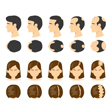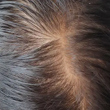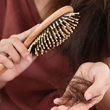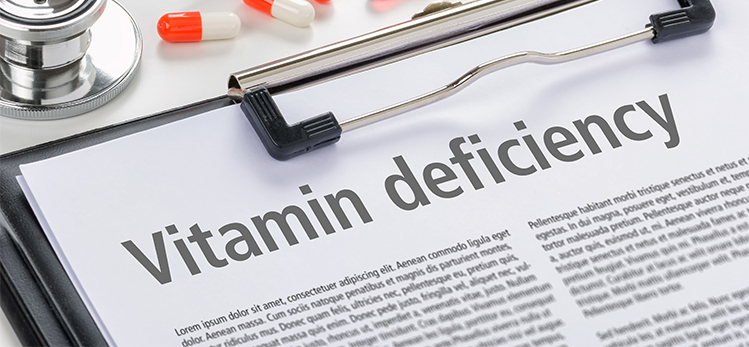Role Of Vitamin Deficiency Hair Loss
Hair loss, or alopecia, is a common problem that most individuals face in their life. While ageing is the most common reason for hair loss, there are other factors at play too.

Some of these factors or reasons include,
Seasonal changes (hair starts falling towards the end of fall and during the winter)
Strong chemicals from the wrong hair products
Over usage of devices like hair straighteners and curlers
Lack of essential nutrients in the body
Hereditary or genes
In this blog, we will discuss the lack of nutrients and the role of vitamin deficiency in hair loss.
In fact, a deficiency in these nutrients and other minerals can cause chronic TE (a form of diffuse hair loss), androgenetic alopecia or male pattern baldness, female pattern hair loss (FPHL), and alopecia areata (patchy hair loss)
Vitamin D Deficiency
Of all the vitamins that are responsible for hair growth, vitamin D is probably the most vital. Vitamin D helps your body create new hair follicles. If your diet lacks the required quantity of vitamin D, your hair may stop growing and start thinning.
Dietary charts and references state that the Recommended Dietary Allowance (RDA) for most individuals up to the age of 70 is 15 micrograms. For adults above the age of 70, this value rises to 20 micrograms.
Apart from getting the proper intake of vitamin D from your diet, sunlight is another good natural source of vitamin D. Insufficient exposure to direct sunlight can also cause vitamin D deficiency, thereby leading to hair loss.
Vitamin B7
Vitamin B7, or Biotin, enhances the keratin production in the hair and boosts the growth of hair follicles. While biotin deficiency is very rare, it can also cause hair loss.
The Opposite Effect
Until now, we discussed how a deficiency in a few essential vitamins could lead to hair loss and similar problems. But there is another extreme or end to this spectrum that is equally critical to know - over-consumption of vitamins or hypervitaminosis. Yes, over-consuming a few vitamins can also cause hair loss.
Studies show that Vitamin A activates the hair follicle stem cells and stimulates the anagen phase of the hair growth cycle (3). A deficiency in vitamin A does not lead to hair loss. However, high levels of vitamin A from over-consumption can cause hair loss
How Can You Avoid Vitamin Deficiency?

Natural Sources
Consuming a balanced diet with the necessary quantities of all these vitamins is the best way to avoid any deficiency. Fruits, green leafy vegetables, fish, etc., are all great food options that you can consume to prevent vitamin deficiency.
Standing under direct sunlight during the morning hours can also help you keep your vitamin D levels in check.
Vitamin Supplements
If you cannot maintain optimal vitamin levels in your body from natural sources, then you should consider taking a few vitamin supplements. These supplements complete your daily required nutrient intake.
The most important thing to know about supplements is to avoid over-consumption at all costs. As seen earlier, in the case of vitamin A, hypervitaminosis A can cause hair loss. But the damage can be even more severe with other vitamins.
For instance, over-supplementation of vitamin E, or hypervitaminosis E, can increase the risk of bleeding and decrease the production of thyroid hormones.
Health organizations and medical centres always recommend consulting a doctor or a medical expert before consuming any supplements. These experts can better guide you on the dosage of your vitamin supplements if you need them.
How to Prevent Hair Loss?
Apart from consuming vitamin and nutrient-rich food or supplements, here are a few extra tips that you can follow to prevent hair loss or stimulate hair growth.
Use mild hair products
Massage your scalp with essential oils
Avoid over-using hair styling devices and other appliances
Try and reduce your stress levels as much as possible
Drink lots of water and stay hydrated
Visit your dermatologist to know more about your hair fall and the treatment options available
Conclusion
In a nutshell, deficiencies in a few vitamins can cause hair loss along with other health-related problems. Over-consuming or over-supplementing a few vitamins can also lead you down the same path.
Besides vitamins, deficiency in other nutrients and minerals like iron, zinc, and selenium also causes hair loss.
Maintaining recommended levels of these vitamins and minerals in your body through a balanced diet or supplements is the only way to avoid any deficiency and hair loss. But make sure you consult a doctor or medical expert before you start on any supplements.
Myth Busters HairFall

Androgenetic Alopecia - Everything You Need To Know
Have you been experiencing excessive hair fall over a prolonged period of time? It could be an early sign of androgenetic alopecia. It is a hair loss disorder common in both genders and can lead to progressive thinning and even baldness in some patients if not caught and treated early.

How To Make Hair Grow Faster For Men
A head full of healthy hair is a matter of confidence. Hair has its own mechanism of growing and shedding, and it is when this mechanism is thrown off that growth is hindered. Especially in the case of males, hair growth faces a lot of hiccups that can easily be managed.

Female Pattern Baldness - Causes & Treatments
Have you suddenly noticed an increase in the number of hair strands on your pillow in the morning? Or is your ponytail getting thinner by day? Well, you might be suffering from female pattern baldness. While that does sound scary, identifying it early on is key to treating this condition effectively. So keep reading to know what this is, how you can identify it, and most importantly, what treatments you can avail of to get your beautiful lustrous hair back.

What Are The Reasons For Hairfall?
Almost everyone experiences some amount of hair thinning over the years. Shedding around 50 to 100 single strands of hair per day is considered normal. However, losing more than 150 strands a day, experiencing sudden thinning, or developing circular bald patches on your scalp are reasons for concern. Hair loss occurs when new hair doesn’t grow fast enough to replace the amount of hair you lose daily. Hair can fall due to various reasons, with hereditary hair loss and poor nutrition being the most common hair fall reasons.

Expert Approved Tips For Hair Growth
What can be more debilitating than seeing hundreds of hair strands shedding from your scalp every time you brush your hair? Also, excessive molting occurs during seasonal changes that can be very stressful for you. Although it’s okay to lose between 50-100 strands every day, according to the American Academy of Dermatology, the problem occurs when you start shedding more than normal. But that doesn’t mean you have to feel helpless as there are ways to grow your hair back. Even if you are coping with baldness or alopecia, certain hair growth tips from dermatologists can come to your rescue. Read on to discover how these tips can be your savior when abnormal hair fall problems are in sight.
Trending Videos
+ 3 Sources
LMRC - GGI-CO-A2-DMA-300026127-300026127-WM-J21-282
© 2021 Dr. Reddy’s Laboratories Ltd. All rights reserved.
